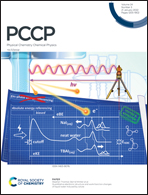Surface modeling of photocatalytic materials for water splitting
Abstract
The photocatalyst surface is central to photocatalytic reactions. However, it has been a challenge to explicitly understand both the surface configuration and the structure-dependent photocatalytic properties at the atomic level. First-principles density functional theory (DFT) calculations provide a versatile method that makes up for the lack of experimental surface studies. In DFT calculations, the initial surface model greatly affects the accuracy of the calculation results. Consequently, establishing a more realistic and more reliable material surface models is undoubtedly the first step and the most important link in theoretical calculations. The aim of this Perspective is to provide a general understanding of the methods for the surface modeling of photocatalytic materials in recent years. We begin with a discussion of the basic theories applied in photocatalytic surface research, followed by an explanation of the importance of surface modeling in photocatalysis. We then elaborate on the advantages and disadvantages of the basic surface model and briefly describe the latest surface modeling methods. Finally, we evaluate the rationality of current surface modeling methods. We summarize this Perspective by prospecting the developing directions of photocatalytic surface research in the future. It is believed that a reasonable surface model should be verified by both experimental characterization and theoretical computation with negative feedback.

- This article is part of the themed collection: PCCP Perspectives


 Please wait while we load your content...
Please wait while we load your content...